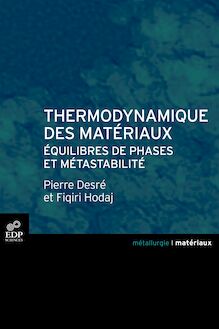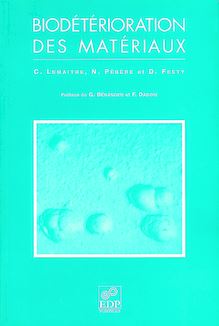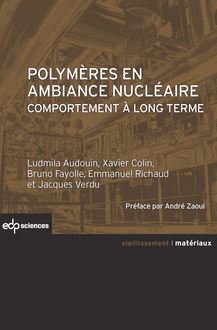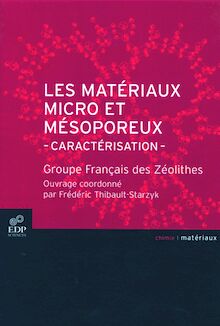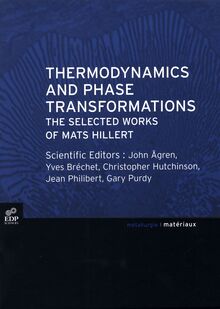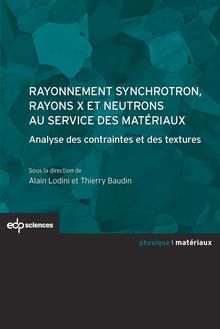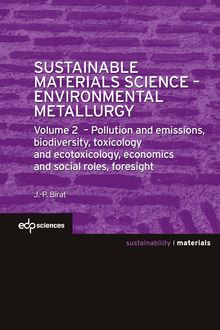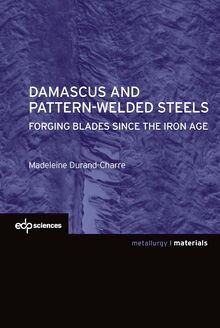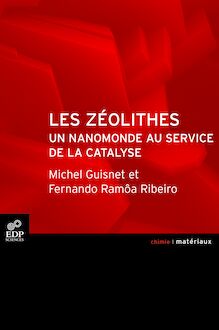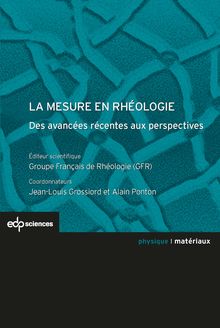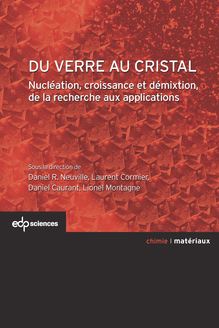Damascus and pattern-welded steels , livre ebook
223
pages
English
Ebooks
2014
Obtenez un accès à la bibliothèque pour le consulter en ligne En savoir plus
Découvre YouScribe en t'inscrivant gratuitement
Découvre YouScribe en t'inscrivant gratuitement
223
pages
English
Ebooks
2014
Obtenez un accès à la bibliothèque pour le consulter en ligne En savoir plus
Publié par
Date de parution
01 mai 2014
Nombre de lectures
1
EAN13
9782759816354
Langue
English
Poids de l'ouvrage
94 Mo
Steels are a class of materials with multiple and complicated transformations; this is true even for steels of the basic cutlery industry. A damascus steel is a fascinating subject to study, rich in multiple facets, that appears in a first approach as a composite material artistically exploited.
Damacus steel was developed in the first millennium AD in India or Sri-Lanka. Its reputation is related to its exceptional properties and to the moire pattern. A similar damask pattern could be obtained by forge-welding giving rise to controversies. Recent findings allow a better understanding of this pattern formation.
This book presents firstly, observations of ancient blade samples examined with modern technologies such as electron microscopy. The features of many typical swords from different periods are discussed: Celtic, Merovingian, Viking and oriental wootz swords, Persian shamshirs, Japanese katana, rapiers etc. In the second part, microstructural observations at different levels of magnification are displayed and their interpretation is discussed in detail, thus revealing the secret of sophisticated forgings. One chapter is devoted to introducing the main transformations undergone by these steels during the forging processes.
The book is intended for all those people interested in the history of science and more specifically to the metallurgists, to the archaeologists and all the researchers confronted with the problems of the expertise of the vestiges, to the blacksmiths, and to the collectors of valuable artistic blades.
See the author's website
Publié par
Date de parution
01 mai 2014
Nombre de lectures
1
EAN13
9782759816354
Langue
English
Poids de l'ouvrage
94 Mo
DAMASCUS AND PATTERN-WELDED STEELS
Forging blades since the iron age
Madeleine Durand-Charre
Steels are a class of materials with multiple and complicated transformations; this is true even for steels
of the basic cutlery industry. A damascus steel is a fascinating subject to study, rich in multiple facets, that
appears in a fi rst approach as a composite material artistically exploited.
Damacus steel was developed in the fi rst millennium AD in India or Sri-Lanka. Its reputation is related
to its exceptional properties and to the moire pattern. A similar damask pattern could be obtained by
DAMASCUS AND
forge-welding giving rise to controversies. Recent fi ndings allow a better understanding of this pattern
formation.
This book presents fi rstly, observations of ancient blade samples examined with modern technologies
PATTERN-WELDED STEELS
such as electron microscopy. The features of many typical swords from different periods are discussed:
Celtic, Merovingian, Viking and oriental wootz swords, Persian shamshirs, Japanese katana, rapiers etc. In
the second part, microstructural observations at different levels of magnifi cation are displayed and their
FORGING BLADES SINCE THE IRON AGE
interpretation is discussed in detail, thus revealing the secret of sophisticated forgings. One chapter is
devoted to introducing the main transformations undergone by these steels during the forging processes.
The book is intended for all those people interested in the history of science and more specifi cally to the
metallurgists, to the archaeologists and all the researchers confronted with the problems of the expertise
of the vestiges, to the blacksmiths, and to the collectors of valuable artistic blades.
Madeleine Durand-Charre
Madeleine Durand-Charre has taught structural metallurgy at the Polytechnic Institute of Grenoble and
at the University Joseph Fourier of Grenoble. Her research work concerned microstructure formation and
determination of phase equilibria. She investigated complex alloys such as superalloys and steels. Her work
on vanadium cast irons was awarded the Vanadium Shield in 1989 from the Institute of Metals. She is
author of several books and articles in metallurgy.
ISBN : 978-2-7598-1173-1 / 49 €
www.edpsciences.org
materials I metallurgy metallurgy I materials
D
AMA
SC
US AND
P
A
TTERNWELDED S
TEELS
MA
deleine Dur
and-Charr
eTitrelivre.fm Page i Mercredi, 16. avril 2014 1:51 13
DAMASCUS AND
PATTERN-WELDED STEELS
Forging blades since the iron age
Madeleine Durand-CharreTitrelivre.fm Page ii Mercredi, 16. avril 2014 1:51 13
This new book is an updated translation from French of “Les aciers damassés. Du
fer primitif aux aciers modernes” (Presses des Mines, 2007).
Books by the same author:
“The microstructure of superalloys” (Gordon and Breach, 1997)
“La microstructure des aciers et des fontes” (SIRPE, 2003 and EDP, 2012)
“Microstructure of steels and cast irons” (Springer, 2004, translated from French
version here above)
Printed in France
ISBN: 978-2-7598-1173-1
This work is subject to copyright. All rights are reserved, whether the whole or part
of the material is concerned, specifically the rights of translation, reprinting, re-use
of illustrations, recitation, broad-casting, reproduction on microfilms or in other
ways, and storage in data bank. Duplication of this publication or parts thereof is
only permitted under the provisions of the French Copyright law of March 11,
1957. Violations fall under the prosecution act of the French Copyright law.
© EDP Sciences 2014
DAMASCUS147TDM.fm Page i Mercredi, 16. avril 2014 1:51 13
Table of contents
Introduction . . . . . . . . . . . . . . . . . . . . . . . . . . . . . . . . . . . . . . . . . . . . . . . . . . . . . . III
Aknowledgments . . . . . . . . . . . . . . . . . . . . . . . . . . . . . . . . . . . . . . . . . . . . . . . . . . V
First part :
The Blacksmith’s steel spanning four millennia
1 Primitive iron
1.1 Iron before the Iron Age . . . . . . . . . . . . . . . . . . . . . . . . . . . . . . . . . . . . . . . . . . . 3
1.2 Early iron making techniques . . . . . . . . . . . . . . . . . . . . . . . . . . . . . . . . . . . . . . . 7
1.3 The mythical aspects of iron . . . . . . . . . . . . . . . . . . . . . . . . . . . . . . . . . . . . . . 12
1.4 Archaeological remains . . . . . . . . . . . . . . . . . . . . . . . . . . . . . . . . . . . . . . . . . . 15
2 Blacksmith steel before the Christian era
2.1 The swords/daggers of Loristan . . . . . . . . . . . . . . . . . . . . . . . . . . . . . . . . . . . . 19
2.2 The Celtic sword-making tradition . . . . . . . . . . . . . . . . . . . . . . . . . . . . . . . . 22
2.3 The Etruscan swords . . . . . . . . . . . . . . . . . . . . . . . . . . . . . . . . . . . . . . . . . . . 31
3 The swords of the first millennium AD
3.1 Merovingian (481-751) and
Carolingian (after 751) swords . . . . . . . . . . . . . . . . . . . . . . . . . . . . . . . . . . . . 33
3.2 The Vikings swords . . . . . . . . . . . . . . . . . . . . . . . . . . . . . . . . . . . . . . . . . . . . . 40
3.3 Swords in China . . . . . . . . . . . . . . . . . . . . . . . . . . . . . . . . . . . . . . . . . . . . . . . . 45
3.4 Swords forged with crucible steel . . . . . . . . . . . . . . . . . . . . . . . . . . . . . . . . . . 45
4 Did you say Damascus steel, Damascene or damask ?
4.1 The debate on the origin of the naming . . . . . . . . . . . . . . . . . . . . . . . . . . . . . . 47
4.2 From laminated to figurative blades . . . . . . . . . . . . . . . . . . . . . . . . . . . . . . . . 48
4.3 Crystallization steel or pattern-welded steel . . . . . . . . . . . . . . . . . . . . . . . . . . 51
4.4 Damaskeen, damaskeened, damascene . . . . . . . . . . . . . . . . . . . . . . . . . . . . . 53
5 From swords to knives
5.1 The lake of Paladru . . . . . . . . . . . . . . . . . . . . . . . . . . . . . . . . . . . . . . . . . . . . . 55
5.2 The knives at the beginning of the millennium, in the year one thousand . . . . 57
6 The swords of the second millennium
6.1 The use of the sword in Europe . . . . . . . . . . . . . . . . . . . . . . . . . . . . . . . . . . . . 63
6.2 Damask rapiers . . . . . . . . . . . . . . . . . . . . . . . . . . . . . . . . . . . . . . . . . . . . . . . . . 65
6.3 The engraved steel imitates and competes with the damasked steel . . . . . . . . 68
6.4 Making gun barrels with damask . . . . . . . . . . . . . . . . . . . . . . . . . . . . . . . . . . . 69
6.5 The pattern-welded oriental swords . . . . . . . . . . . . . . . . . . . . . . . . . . . . . . . . 73
6.6 Swords made with Damascus steel . . . . . . . . . . . . . . . . . . . . . . . . . . . . . . . . . 78
6.7 Japanese swords . . . . . . . . . . . . . . . . . . . . . . . . . . . . . . . . . . . . . . . . . . . . . . . . 83
7 Art and Technology in the third millennium
7.1 The Renaissance of an art and craft . . . . . . . . . . . . . . . . . . . . . . . . . . . . . . . . . 91
7.2 The search for the best cutting edge . . . . . . . . . . . . . . . . . . . . . . . . . . . . . . . . 92DAMASCUS147TDM.fm Page ii Mercredi, 16. avril 2014 1:51 13
II DAMASCUS AND PATTERNWELDED STEELS
7.3 Multilayer steels . . . . . . . . . . . . . . . . . . . . . . . . . . . . . . . . . . . . . . . . . . . . . . . . 98
7.4 Inserts and mosaic patterns . . . . . . . . . . . . . . . . . . . . . . . . . . . . . . . . . . . . . . 105
7.5 Sintered steels . . . . . . . . . . . . . . . . . . . . . . . . . . . . . . . . . . . . . . . . . . . . . . . . 110
7.6 The colored blades . . . . . . . . . . . . . . . . . . . . . . . . . . . . . . . . . . . . . . . . . . . . . 115
7.7 The contemporary wootz . . . . . . . . . . . . . . . . . . . . . . . . . . . . . . . . . . . . . . . . 119
Second part :
Formation of the damask pattern
8 Understanding steels
8.1 Phases and phase diagrams . . . . . . . . . . . . . . . . . . . . . . . . . . . . . . . . . . . . . . 127
8.2 Austenite transformation in the Fe-C system . . . . . . . . . . . . . . . . . . . . . . . 132
8.3 Kinetics of the austenite transformation . . . . . . . . . . . . . . . . . . . . . . . . . . . . 136
8.4 Heat treatments . . . . . . . . . . . . . . . . . . . . . . . . . . . . . . . . . . . . . . . . . . . . . . . 140
8.5 Solidification structure . . . . . . . . . . . . . . . . . . . . . . . . . . . . . . . . . . . . . . . . . . 143
8.6 Dendritic segregation . . . . . . . . . . . . . . . . . . . . . . . . . . . . . . . . . . . . . . . . . . 145
8.7 Steels used for cutlery . . . . . . . . . . . . . . . . . . . . . . . . . . . . . . . . . . . . . . . . . . 148
8.8 Optimizing microstructure . . . . . . . . . . . . . . . . . . . . . . . . . . . . . . . . . . . . . . . 151
8.9 Coloration of stainless steels . . . . . . . . . . . . . . . . . . . . . . . . . . . . . . . . . . . . . 154
8.10 Powder metallurgy . . . . . . . . . . . . . . . . . . . . . . . . . . . . . . . . . . . . . . . . . . . 156
9 Pattern-welding
9.1 Welding different layers . . . . . . . . . . . . . . . . . . . . . . . . . . . . . . . . . . . . . . . . 159
10 Moire pattern in wootz type, high carbon steels
10.1 Crucible steels (wootz, pulad) . . . . . . . . . . . . . . . . . . . . . . . . . . . . . . . . . . . 169
10.2 Formation of the moire pattern . . . . . . . . . . . . . . . . . . . . . . . . . . . . . . . . . . 170
10.3 Structure of the matrix . . . . . . . . . . . . . . . . . . . . . . . . . . . . . . . . . . . . . . . . . 180
11 Alignments in medium carbon steels
11.1 A well-known phenomenon . . . . . . . . . . . . . . . . . . . . . . . . . . . . . . . . . . . . . 189
11.2 Occurrence of banding in ancient steels . . . . . . . . . . . . . . . . . . . . . . . . . . . 193
11.3 The contribution of structural metallurgy . . . . . . . . . . . . . . . . . . . . . . . . . . 199
12 References
List of references . . . . . . . . . . . . . . . . . . . . . . . . . . . . . . . . . . . . . . . .
